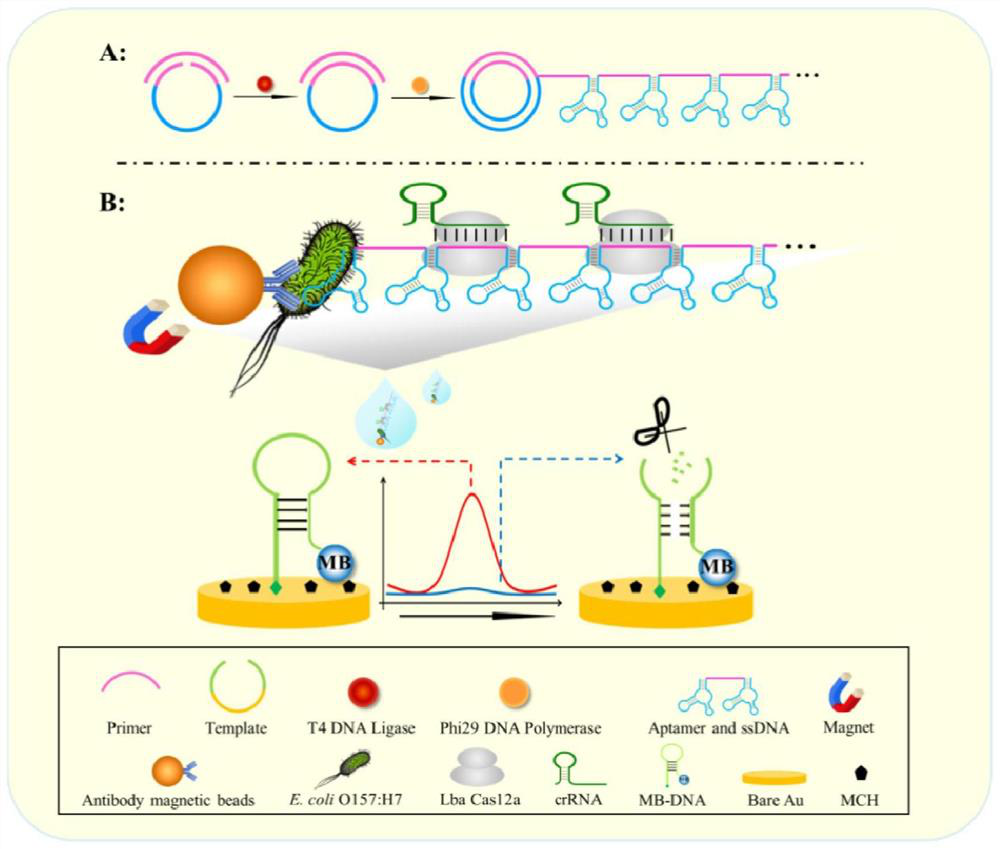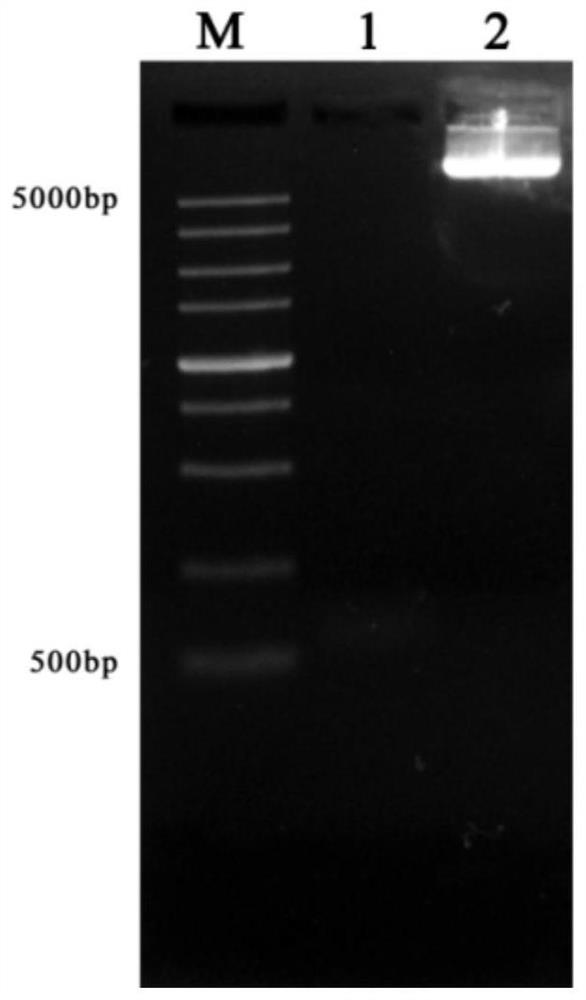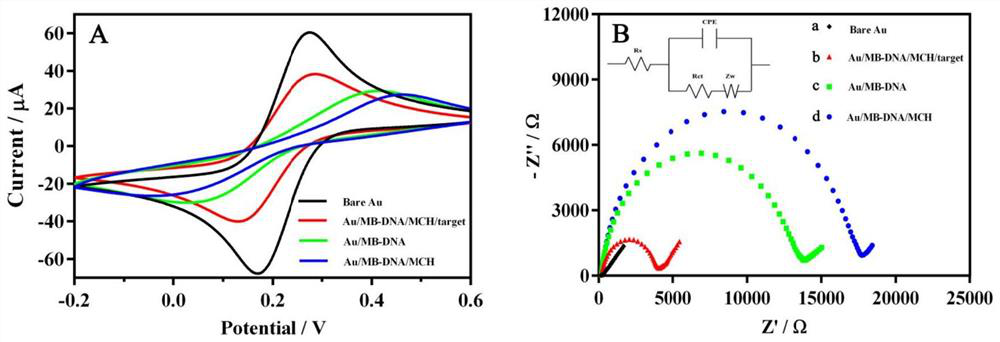CRISPR/Cas12a-RCA electrochemical sensor detection system and application thereof
An electrochemical and sensor technology, applied in the field of rapid detection of food-borne pathogens, can solve the problems of unsuitable rapid detection of food-borne pathogens and complicated detection process, and achieve shortened detection time, high detection sensitivity, and increased sensitivity Effect
- Summary
- Abstract
- Description
- Claims
- Application Information
AI Technical Summary
Problems solved by technology
Method used
Image
Examples
Embodiment 1
[0053] Example 1 Preparation of Reagents Required for Electrochemical Sensing and Detection and Its Feasibility Analysis
[0054] The inventive principle of the present invention is as figure 1 As shown, it uses the RCA reaction to form a functional RCA product under the action of the 5'-phosphorylated linear padlock probe and the ligation probe, which is rich in a large number of repeat units that can specifically bind to Escherichia coli O157:H7 The aptamer sequence and the target ssDNA sequence that are specifically complementary to crRNA to initiate the endonuclease activity of the CRISPR / Cas12a-RCA enzyme cutting system.
[0055] After treating the Au electrode of the electrochemical biosensor, the MB-DNA hairpin probe rich in T sequence and modified with the electrochemical signaling molecule methylene blue (MB) was immobilized on the Au electrode through the Au-S bond, and The active site was blocked with MCH (6-mercapto-1-hexanol) to reduce non-specific adsorption in ...
Embodiment 2
[0092] Example 2 Optimization of Electrochemical Sensing Detection Conditions
[0093]During the research process of the present invention, it was found that the incubation time of antibody magnetic beads and the target-Escherichia coli O157:H7 and the RCA product to form a sandwich structure and the incubation time of CRISPR / Cas12a enzyme cleavage have a great influence on the detection of CRISPR / Cas12a-RCA electrochemical biosensor Effects will matter. Due to the high concentration of antibody magnetic beads and RCA product, non-specific coupling phenomenon will occur, which will cause some false positives for negative results. The amount of RCA product and the subsequent CRISPR / Cas12a enzyme digestion system will also be affected. Therefore, after determining the feasibility of the method, it is necessary to find the optimal detection amount of antibody magnetic beads and RCA products, and finally optimize the concentration of important Cas12a and crRNA in the CRISPR / Cas12a...
Embodiment 3
[0107] Example 3 Electrochemical Sensing Detection Sensitivity and Specificity Analysis
[0108] Under the optimal test condition optimized, the present invention utilizes DPV response to analyze the sensitivity of electrochemical sensor, Escherichia coli O157:H7 is diluted into 10,10 according to 10 times gradients 2 、10 3 、10 4 、10 5 、10 6 、10 7 CFU mL -1 . The result is as Figure 7 as shown, Figure 7 A shows the corresponding relationship between the DPV signal and the logarithm of the concentration of E. coli O157:H7. It can be seen from the figure that the oxidation peak current decreases with the increase of the concentration of the target bacteria. Figure 7 The results of B show that the ΔI% of the DPV response is related to the target bacteria concentration (logarithmic scale) between 10 and 10 7 CFU mL -1 There is a good linear relationship in the range (R 2 =0.9942), the corresponding regression equation is Y=10.71X+18.90, wherein Y and X represent the ...
PUM
 Login to View More
Login to View More Abstract
Description
Claims
Application Information
 Login to View More
Login to View More - R&D
- Intellectual Property
- Life Sciences
- Materials
- Tech Scout
- Unparalleled Data Quality
- Higher Quality Content
- 60% Fewer Hallucinations
Browse by: Latest US Patents, China's latest patents, Technical Efficacy Thesaurus, Application Domain, Technology Topic, Popular Technical Reports.
© 2025 PatSnap. All rights reserved.Legal|Privacy policy|Modern Slavery Act Transparency Statement|Sitemap|About US| Contact US: help@patsnap.com



